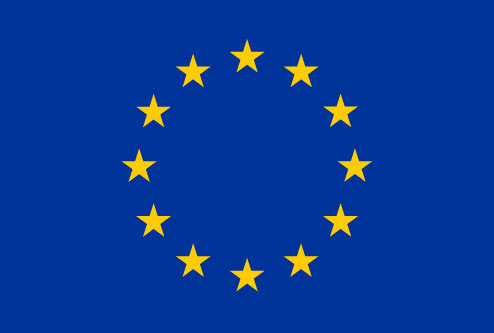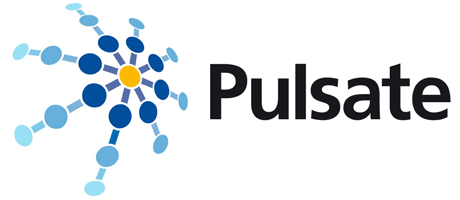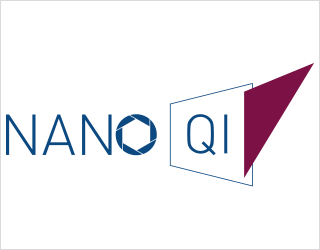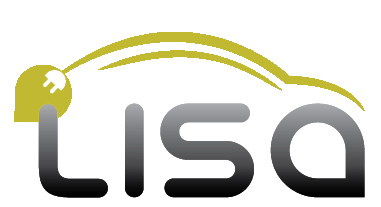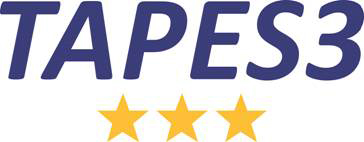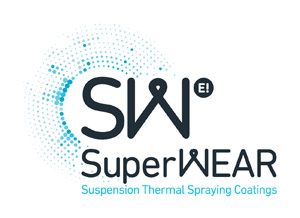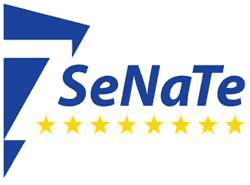EU Cooperations
- ALBATROSS – Advanced Light-weight BATteRy systems Optimized for fast charging, Safety, and Second-life applications
- PULSATE – Fostering the PAN-European infrastructure for empowering SMEs digital competences in laser-based advance and additive manufacturing
- imSAVAR – Immune Safety Avatar: nonclinical mimicking of the immune system effects of immunomodulatory therapies
- NanoQI – Multimodal X-ray and Hyperspectral Thin-Film Nano-material Evaluation and Quality Imaging
- SAMOA – Sustainable Aluminium additive Manufacturing for high performance Applications
- LISA – Lithium sulphur for Safe road electrification
- PROMETHEUS – Pulsed Rapid ultra-short laser surface texturing for Manufacture of FlexiblE and CusTomisEd ProdUctS
- TAPES3 – Technology Advances for Pilotline of Enhanced Semiconductors for 3nm
- LILIAM – Lifelong Learning in Additive Manufacturing
- OLEDSOLAR – Innovative manufacturing processes for opto-electronic devices
- SPAcEMAN – Sustainable Powders for AdditivE MANufacturing
- SHARK – laSer surface engineering for new and enHanced functionAl perfoRmance with digitally enabled Knowledge base
- SuperWEAR – Suspension Thermal Spraying Coatings
- SeNaTe (Seven Nanometer Technology) – Research for chips based on seven nanometer technology
- LASER4FUN – European ESRs Network on short pulsed laser micro/nanostructuring of surfaces
- ALABO – Advanced Thin, Organic and Large Area Electronics (TOLAE) technologies
- NanoCaTe – Nano-carbons for versatile power supply modules
- PLIANT – Process Line Implementation for Applied Surface Nanotechnologies
- DEBACOAT – Development of high-performance barrels with innovative gradient coatings
- SUMA2 – Surface Modification for Advanced Applications
- LIFT – Leadership in Fibre Lasers
- SOLNOWAT Project
- nanoMOF – Nanoporous Metal-Organic Frameworks for production
- ORBITAL Project
- N2P – Nano To Production
ALBATROSS – Advanced Light-weight BATteRy systems Optimized for fast charging, Safety, and Second-life applications
The project ALBATROSS has received funding from the European Union`s Horizon 2020 research and innovation program under Grant Agreement No 963580.
Project duration: 01.01.2021–31.12.2024
Abstract of the Grant Agreement
ALBATROSS addresses the needs of European Electric and Hybrid-Electric passenger vehicle market by overcoming driver concerns relating to battery range and anxiety, cost, long-term reliability and excessive charging times. ALBATROSS will develop an integrated approach based on smart batteries combined with lightweight designs. Using innovative cooling technologies, we will achieve pack temperature range 5-40°C (30-40°C under ultra-fast charging), with <3°C variation between battery cells and optimal operating temperature 20-23°C. The light weighting solutions, based on modular multi-material systems for battery modules and trays, will be fabricated and joined using cutting edge, fast and cost-effective processes, with disassembly, recycling and reuse designed in as a part of an eco-design approach.
The Fraunhofer IWS intends the development innovative laser-based joining technologies and design concepts for light-weight cell connections and the aluminium battery tray. Surface structuring methods, using interference patterning approach, will be developed with the aim of increasing thermal and electrical conductivity of cells and battery components.
ALBATROSS represents a pan-European EU consortium of world leading organisations that are looking to commercialise these technologies of European origin. The coordinator (Yesilova) has a global presence in the automotive market and the consortium is strengthened by organisations that are part of the global Fiat-Chrysler, Ford and Mercedes-Benz groups as well as European SMEs with world leading technologies.
PULSATE – Fostering the PAN-European infrastructure for empowering SMEs digital competences in laser-based advance and additive manufacturing
The project PULSATE has received funding from the European Union`s Horizon 2020 research and innovation program under Grant Agreement No 951998.
Project duration: 01.09.2020–31.08.2024
Abstract of the Grant Agreement
Digitizing European industry is essential for European competitivity in the 21st century, but only 1/5 of EU SMEs is highly digitised. Laser Based Advanced and Additive Manufacturing (LBAAM) technologies are regarded as Key Enablers for Digital Production and offer important advantages to the adopters. SMEs have strong entry barriers for the technology: Investment cost, technology complexity, system integration and awareness/adoption readiness. PULSATE aims to lower all said barriers to boost the adoption of Laser Based technologies by SMEs and promote the development of SME-friendly laser based equipment and solutions.
PULSATE will establish a Pan-European Network to stimulate SMEs to take part in Innovation Ecosystem of LBAAM, by connecting Digital Innovation Hubs (DIHs) to a support structure of knowledge, infrastructure and services, designed to tackle the issues currently limiting the adoption of LBAAM technology. A balanced combination is proposed between wide outreach using interconnected Virtual Communities and ICT tools (a Single Entry Point will connect a wide range of networking and servicing tools), and close exchange and interaction via DIHs. The project relies on a consortium of 6 competence centres (AIMEN, FTMC, MTC, SINTEF, Fraunhofer, CEA), service community and marketplace providers (FBA, CLESGO) and a photonics industry association (EPIC). With >50 previous projects outcomes, existing tools and services, connections with 74 running DIHs, Clusters and regional initiatives, PULSATE counts with the explicit support of companies and institutions (>80LoS), and an independent Board of Stakeholders gathering key players in LBAAM will ensure the quality and pertinence of PULSATE orientation.
PULSATE will operate under 4 action areas: Business, Technology, Competence & Awareness, addressing the following technology domains: Nano/Micro Fabrication, AM, High Power Laser Manufacturing and Digitisation, and implementing 4 Open Calls and a catalogue of services.
imSAVAR – Immune Safety Avatar: nonclinical mimicking of the immune system effects of immunomodulatory therapies
The project NanoQI has received funding from the European Union`s Horizon 2020 research and innovation program under Grant Agreement No 853988.
Project duration: 01.03.2020–30.11.2025
Abstract of the Grant Agreement
The vision of Immune Safety Avatar (imSAVAR) is to develop a platform for integrated nonclinical assessments of immunomodulatory therapy safety and efficacy. Existing nonclinical models do not adequately represent the complexity of the immune system and its interactions in both immunoncology and immunmediated diseases. They also do not accurately reflect the diversity of response to new therapies that is seen in clinical medicine. We will, thus, constantly refine existing and develop new nonclinical models with the final goal of validation aiming at:
- (i) understanding the value of nonclinical models for predicting efficacy and safety of immunomodulators, incorporating cellular high throughput assays, complex organisms models and micro physiological systems,
- (ii) developing new endpoints and better monitoring approaches for immune function tests, and
- (iii) designing cellular and molecular biomarkers for early detection of adverse effects.
The platform imSAVAR will be based upon case studies for prioritized therapeutic modalities and has been built around institutes of the Fraunhofer-Gesellschaft which has strong track records in applied science and in particular toxicology. The consortium will improve the prediction of the transferability of safety and efficacy of immunomodulators from pre-clinical models to first-in-human studies in collaboration with the private sector, pharma, regulators and technology providers. We will share experience on customized models that can be deployed (w.r.t. the 3Rs principles), establish the necessary infrastructure, conduct the analyses and provide wider disease domain expertise. This conjoint effort assures that the platform imSAVAR constantly benefits the field of immune safety evaluation, and will generate opportunities for European businesses.
A guiding principle of this consortium is the meaningful engagement of multiple stakeholders including patients and regulators. A multi-stakeholder community will be established.
The project NanoQI has received funding from the European Union`s Horizon 2020 research and innovation program under Grant Agreement No 862055.
Project duration: 01.03.2020–28.02.2023
Abstract of the Grant Agreement
Functional performances of nano-materials and thin films with nano-scale thickness are determined not only by material selection but also by their nano-physical dimensions, nano-scale structure and their nano-scale chemical composition. Precise characterisation of these properties is critical to develop new functional nano-materials and optimise processes toward higher performance, improved reproducibility and yield and up-scaling to larger quantities. X-ray characterisation techniques such as X-ray diffraction analysis (XRD) or X-ray reflectometry (XRR) are widely used in research laboratories for this task but are rarely used in industrial material development and assessment of production processes due to technical limitations and required high level expertise. The project NanoQI targets the development of an industry-suited, real-time and in-line capable technique to characterise nano-structure and nano-dimensions of (thin-film) nano-materials by optimisation of area-detector based XRR and XRD concepts and their multi-modal combination with a novel wide-angle hyper-spectral imaging (HSI) technique. Therewith, NanoQI will provide industry access to real time evaluation of nano-material geometry, structure and morphology and correlative imaging of deviations of these properties. NanoQI technology will be demonstrated in three relevant industrial application scenarios: in-situ process assessment in manufacturing of perovskite solar cells; large-area vacuum roll-to-roll coating of polymer webs and industrial atomic layer deposition of dielectric and gas barrier layers.
EIT RawMaterials, initiated and funded by the EIT (European Institute of Innovation and Technology), a body of the European Union, is the largest and strongest consortium in the raw materials sector worldwide. The project SAMOA (Project Agreement No 18079) is funded by the EIT (European Institute of Innovation and Technology).
Project duration: 01.04.2019 – 31.03.2022
Li-ion batteries are still the limiting factor for mass scale adoption of electrified vehicles (EVs) and there is a need for new batteries that enable EVs with higher driving range, higher safety and faster charging at lower cost. LiS is a promising alternative to Li-ion free of critical raw material (CRM) and non-limited in capacity and energy by material of intercalation. LISA proposes the development of high energy and safe LiS battery cells with hybrid solid state non-flammable electrolytes validated at 20Ah cell level according to EUCAR industrial standards for automotive integration. LISA will solve specific LiS bottlenecks on metallic lithium protection, power rate, and volumetric energy density; together with cost the main selection criteria for EV batteries.
The sustainability of the technology will be assessed from an environmental and economic perspective. The technology will be delivered ready for use within the corresponding state of charge estimator facilitating battery pack integration. Today, LiS is twice lighter than Li-ion and has reached only 10% of the sulphur theoretical energy density (2600Wh/kg) at cell prototype level (250-300Wh/kg), with potentially 800Wh/l (600Wh/kg) achievable by improving materials, components and manufacturing.
LISA is strongly oriented to the development of lithium metal protection and solid state electrolyte; and will incorporate manufacturability concepts enabling integration in future manufacturing lines. Moreover, the outcome of the project in terms of new materials, components, cells, and manufacturability will be transferable to other lithium-anode based technologies such as Li-ion and solid state lithium technologies. As such, LISA will have a large impact on existing and next-generation EV batteries, delivering technology with higher energy density beyond the theoretical capacities of chemistries using CRM – i.e. natural graphite and cobalt – or silicon-based chemistries inherently limited by their manufacturability.
The project LISA has received funding from the European Union`s Horizon 2020 research and innovation program under Grant Agreement No 814471.
Project duration: 01.01.2019 – 31.07.2022
TAPES3 is about “Technology Advances for Pilot line of Enhanced Semiconductors for 3nm”. In line with industry needs, Moore’s law, IRDS’ (International Roadmap for Design and System – previously ITRS) white paper on technology roadmap, and ECSEL JU MASP 2017, the main objective is to discover, develop and demonstrate lithography, metrology, EUV mask technology, devices and process modules enabling 3nm node technology. This is planned with available EUV/NA 0.33 scanners. To enable single exposure patterning at 3nm a new “Hyper NA” lithography system design and development featuring a EUV/NA of 0.55 will be initiated.
Process steps for 3D devices as alternative to the conventional FinFET will be explored for application in the 3nm node. The impact of the application of these so called 3D devices on circuit topology and logic design will be explored. During the development, specific challenges in metrology for the characterization of 3D devices will be assessed and metrology tools will be newly developed. The result will be demonstrated in the imec pilot line.
The TAPES3 project relates to the ECSEL work program topic Equipment, Material and Manufacturing. It addresses and targets, as set out in MASP, the grand Challenge of "More Moore Equipment and Materials for sub 10nm technologies" by exploring the requirements and solutions for the 3nm node. The project touches the core of the continuation of Moore’s law. Moreover, the cost aware development process will support the involved companies, and will place them in a preferred position over their worldwide competition. Through their worldwide affiliations, the impact of the TAPES3 project will be felt outside Europe in America and Asia Pacific semiconductor centers and is expected to benefit the European economy a lot by supporting its semiconductor equipment and metrology sectors with innovations, exports and employment.
The project TAPES3 (Contract No. 783247) leading to this application has received funding from the European Union’s Horizon 2020 research and innovation program, BMBF and Free State of Saxony.
Project duration: 01.10.2018 – 30.09.2021
LILIAM aims to set up a training programme in AM dedicated to operators, specialists, engineers, managers and new professionals to fill the actual lack of specialists able to take advantage of AM over the whole value chain (from raw materials to end of life). The LILIAM consortium consists of 8 partners from 7 EU countries that are also partners within the Vanguard Initiative in 3D printing. LILIAM will deliver the first European certificate on AM training.
The project LILIAM (Project Agreement No 18054) has received funding from the EIT (European Institute of Innovation and Technology) „RawMaterials“. The EIT is a body of the European Union.
Project duration: 01.01.2018 – 31.12.2020
The project is aimed at providing a technological basis for the production of more sustainable novel steel powders specifically developed for AM processes, which will cut costs (the use of water atomization plants will lead to a reduction of more than 80% of the investment costs so that feedstock powder will potentially be available on the market at a cost of around 30% the current prices), will reduce European dependence on critical raw materials and boost EU producers competitiveness. Issues about the careful use of critical materials (Cr is reduced by more than 80%, Ni is totally removed, significantly lower amounts of Mo are used in the new proposed steels), about improving the sustainability of the powder production processes and about recyclability of the materials are faced, up a technological readiness level of 8.
The introduction into the market of the two new powders for structural applications will be carried out by the industrial partner Höganäs, who will gain a market advantage, especially over low labour-cost, extra-European competitors. End-user partners who are putting their main interest on the automotive market will have the opportunity of developing by the proposed innovation two demonstrators: a suspension knuckle for cars and a die for the sheet forming of automotive parts.
The project SPAcEMAN (Project Agreement No 17070) has received funding from the EIT (European Institute of Innovation and Technology) „RawMaterials“. The EIT is a body of the European Union.
Project duration: 01.01.2018 – 01.04.2021
SHARK – laSer surface engineering for new and enHanced functionAl perfoRmance with digitally enabled Knowledge base
The SHARK project will advance laser surface texturing from the current ‘trial and error’, lab-scale concept into a highly predictable, data driven industrial approach by developing a digitally enabled knowledge management platform with a comprehensive database of process parameters and functionalities. Pseudo Random laser texturing and Direct Laser Interference Patterning will be employed, offering complementary techniques to yield a highly flexible tool capable of delivering wide range of functional surfaces with exceptional productivity and excellent process efficiency. The project will develop surface texture predictive modelling to rapidly define key process variables required for specific surface functionalities and combine it with two laser surface texturing technologies and inline surface characterization.
The project SHARK has received funding from the European Union`s Horizon 2020 research and innovation program under Grant Agreement No 768701.
Project duration: 01.10.2017 – 30.09.2020
SuperWEAR – Suspension Thermal Spraying Coatings
New cost-effective SUspension ceramic coatings with SUPERior WEAR and insulating properties (Eurostars-Projekt E!9756 SuperWEAR)
SuperWEAR is a bilateral (Spain-Germany) European project approved at the last Eurostars call in 14th position out of 230 eligible projects. Financed by CDTI in Spain and BMBF in Germany, this project has a budget of ca. 1.7 million Euros and 30 months of duration.
The project is based on the development of oxide coatings with superior wear resistance and insulation properties using a cost-effective and environmentally friendly production process based on Suspension Thermal Spraying (STS). The project aims to do the first implementation of STS in SME job shops, demonstrating its advantages in selected components: cylinders for hydroelectric applications, off-shore piston rods, industrial valves, pump components and ball bearings with electrical insulation.
This project has a relevant Consortium which covers the whole product production chain, allowing a position of strength and collaboration within the proposed markets. There is a producer/seller of thermal spray hardware (GTV), there are the hardware users as job coaters (TMCOMAS and OBZ) and there are end-users for the coating solutions (Stern Hidraulica, TMCOMAS and OBZ). Additionally there is a strong knowledge of the suspension spray technique supplied by Fraunhofer IWS / IKTS.
Project duration: 01.12.2015 – 31.05.2018
The SeNaTe project is the next in a chain of thematically connected ENIAC JU KET pilot line projects which are associated with 450 mm/300 mm development for the 12 nm and 10 nm technology nodes. The main objective is the demonstration of the 7 nm IC technology integration in line with the industry needs and the ITRS roadmap on real devices in the Advanced Patterning Center at imec using innovative device architecture and comprising demonstration of a lithographic platform for EUV and immersion technology, advanced process and holistic metrology platforms, new materials and mask infrastructure.
A lithography scanner will be developed based on EUV technology to achieve the 7 nm module patterning specification. Metrology platforms need to be qualified for N7’s 1D, 2D and 3D geometries with the appropriate precision and accuracy. For the 7 nm technology modules a large number of new materials will need to be introduced. The introduction of these new materials brings challenges for all involved processes and the related equipment set. Next to new deposition processes also the interaction of the involved materials with subsequent etch, clean and planarization steps will be studied. Major European stakeholders in EUV mask development will collaboratively work together on a number of key remaining EUV mask issues.
The first two years of the project will be dedicated to find the best options for patterning, device performance, and integration. In the last year a full N7 integration with electrical measurements will be performed to enable the validation of the 7 nm process options for a high volume manufacturing.
The SeNaTe project relates to the ECSEL work program topic process technologies – More Moore. It addresses and targets as set out in the MASP at the discovery of new semiconductor process, equipment and materials solutions for advanced CMOS processes that enable the nano-structuring of electronic devices with 7 nm resolution in high-volume manufacturing and fast prototyping.
The project SeNaTe (Contract No. 675063) leading to this application has received funding from the European Union’s Horizon 2020 research and innovation program, BMBF and Free State of Saxony.
Project duration: 01.06.2015 - 31.05.2018
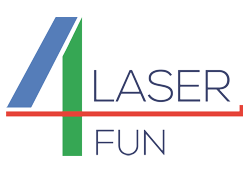
The LASER4FUN research programme pursues to go far beyond the current state through the development of new surface micro/nano-structuring/patterning methods by using emerging SP/USP laser technologies (LIPSS, DLIP, DLW & hybrid tech). The research will focus on the interaction of laser energy with several materials (metals, semiconductors, polymers, glasses & advanced materials) and on new surface functionalities like tribology, aesthetics and wettability. Moreover, LASER4FUN establishes an innovative training programme that aims at coaching a new generation of creative, entrepreneurial and innovative early stage researchers (ESRs) focused on laser surface engineering. This novel programme will contain both scientific and general skills training activities and it will benefit from training at a network (e.g. secondments). In total, 14ESRs will be enrolled, developing individual research projects within LASER4FUN programme. After 36 months of research and training, the ESRs will be PH Doctors prepared to face EU laser-engineering new challenges.LASER4FUN consortium involves 8 Academic partners (4 Universities –one of them as associated partner- and 4 RTD institutions) ensuring the progress beyond the state of the art, and 3 industrial partners guaranteeing that final solutions will be close to the market. They are from 6 different EU countries.
Marie Skłodowska-Curie grant
The project leading to this application has received funding from the European Union’s Horizon 2020 research and innovation programme under the Marie Skłodowska-Curie grant agreement No. 675063.
Project duration: 01.09.2015 - 31.08.2019
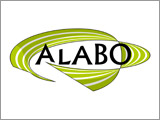
ALABO will develop organic electronic building elements on flexible substrates with monolithically integrated barrier foils as the substrate. The barrier will provide protection against atmospheric gases such as water vapor and oxygen that cause unwanted material degradation. The ALABO consortium will also develop a direct laser scribing process for flexible substrates coated with such ultra-barrier systems. The project results will be applicable to a number of Advanced Thin, Organic and Large Area Electronics (TOLAE) technologies, such as OPV, OLED, OTFT and thin-film inorganic PV on polymer foil substrates.
This project ALABO has received funding from the European Union’s Horizon 2020 research and innovation programme under grant agreement No 644026.
Project duration: 01.01.2015 - 31.12.2017
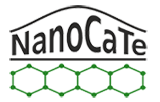
The multidisciplinary consortium of the NanoCaTe project will develop a more efficient thermoelectric- and storage material based on nanocarbon (e.g. graphene and CNT) to reclaim waste heat by thermoelectric generators and to storage the energy in super capacitors or secondary batteries for manifold applications like pulsed sensors or mobile electronic devices.
The integration of the developed materials into harvester and storage devices is a further step to characterize the performance of the innovative materials. Finally, a demonstrator consisting of harvester, storage and energy management represents a self-sustaining, universally usable, and maintenance-free power supply. The project will substantially strengthen the position of Europe in the field of thermoelectric and storage materials by developing devices with increased lifetime produced by cost-efficient technologies and therefore contributing to a further promotion of cleaner energy technologies.
Project duration: 01.10.2013 - 30.09.2017

The EU-funded project PLIANT focuses on the fabrication of nanostructured surfaces through atmospheric pressure processes. Pilot lines will be established to target substantial potential applications in three strategically significant industrial areas: energy storage by high capacity batteries and hybrid capacitors with enhanced energy density, solar power generation and energy efficient (lightweight) airplanes.
Project duration: 01.02.2013 - 31.01.2017

DEBACOAT is a project co-funded by the European Commission within the FP7, that aims at developing a set of barrels with innovative internal hardfacing coatings, featuring a compositional gradient along their length, to optimize the coating behavior and to better face the different tribological and corrosive environments encountered during service in the specific sections of the extruder.
Project duration: 01.01.2013 - 31.12.2014

Designed to collaborate in the field of materials surface modification, the SUMA2 Network includes 8 universities and 1 research center in Europe and Latinamerica.
The purpose of this multidisciplinary network is to combine different areas of expertise in physics, chemistry, materials science, materials engineering, mechanical engineering and electronic engineering towards the development of optimized surfaces for different applications, such as: gas sensors, transparent p-n junctions, organic solar cells, electrochemical electrodes and wear resistant and anticorrosive surfaces.
Project duration: 01.01.2013 - 31.12.2014
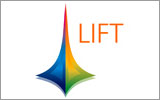
The LIFT project will establish international leadership for Europe in the science, application and production technologies for material processing by fibre lasers through the development of innovative laser sources.
Project duration: 01.09.2009 - 31.08.2013

The project SOLNOWAT aims to develop a dry route alternative for the solar cell industry that will eliminate the very high water consumption and GWP emissions of current process while meeting all production requirements. This project will clearly outline the environmental impact, cost and efficiency of the new process and equipment required, and include dissemination to cell manufacturers.
Project duration: 01.09.2011 - 31.08.2013

“nanoMOF” will focus beyond discovery and integrate nanostructured MOFs into products with industrial impact within a strong cooperation of established MOF research institutions and industrial end users.
Project duration: 01.06.2009 - 31.05.2013

Design, development and evaluation of an orbital laser welding head
Project duration: 01.01.2011 - 31.12.2012

Outstanding progress has been made in recent years in developing novel structures and applications for direct fabrication of 3D nanosurfaces. However, exploitation is limited by lack of suitable manufacturing technologies.
In this project we will develop innovative in-line high throughput technologies based on atmospheric pressure surface and plasma technologies. The two identified approaches to direct 3D nanostructuring are etching for manufacturing of nanostructures tailored for specific applications, and coating.
Project duration: 01.06.2008 - 30.11.2012
 Fraunhofer Institute for Material and Beam Technology IWS
Fraunhofer Institute for Material and Beam Technology IWS